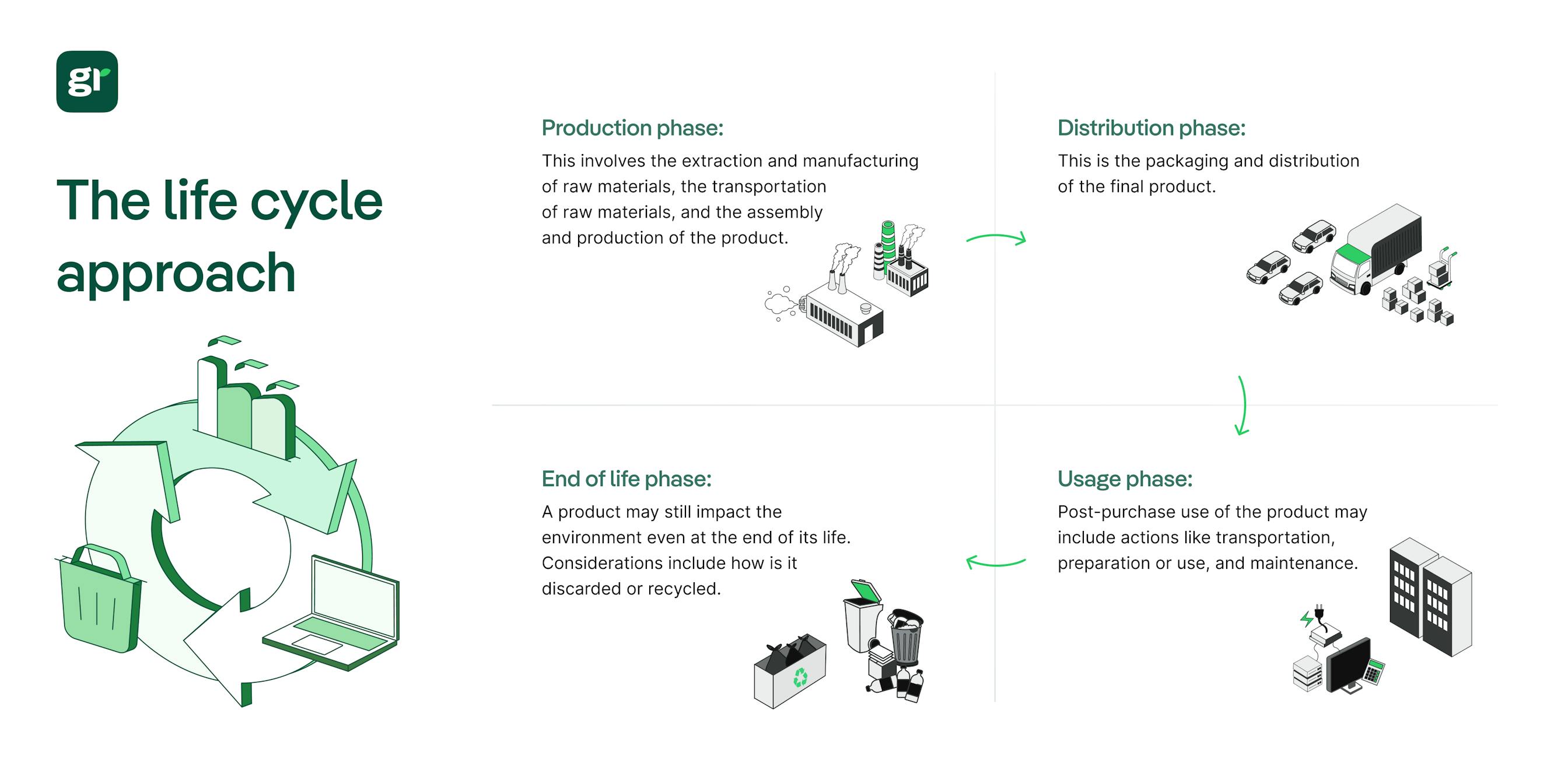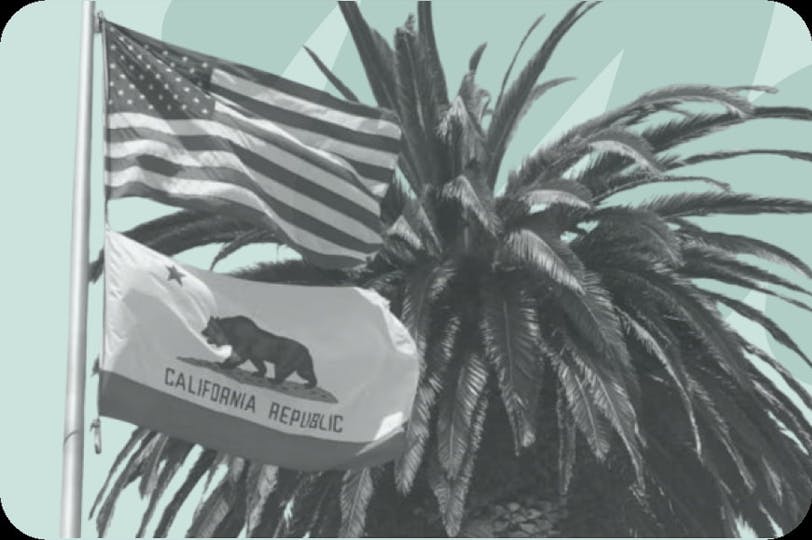
California Climate Accountability Package: SB253, SB261, & SB252
What is the California Climate Accountability Package, and how do SB 253 and SB 261 (SB 219), and SB 252 help the state work towards their environmental goals?
ESG / CSR
Industries



These days, there are several components that companies must remain mindful of if they want to implement sustainability and reduce their carbon footprint – such as ensuring they comply with environmental regulations, seeking the use of a carbon accounting company, and also conducting an LCA with life cycle assessment software.
Going green shouldn’t be a struggle, and that’s why at Greenly – we’re here to make your transition to ecological sustainability easier, and we’ve started by rounding up our top 5 life cycle assessment software.
In this article, we’ll recap what a life cycle assessment is, what the benefits are, and share our favorite life cycle assessment software.
If your company has been in the market for new life cycle assessment software to keep track off your environmental data and improve your LCA process, look no further – we at Greenly have compiled a list of our top 5 life cycle assessment software.
| LCA Software | What Sets It Apart |
|---|---|
| Greenly | Modern, user-friendly, and regulation-ready — Greenly leads the way in intuitive, accurate LCA insights. |
| One Click LCA | Strong in construction and building sectors with deep EPD libraries. |
| Ecochain | Good for manufacturers seeking product footprinting and material flow analysis. |
| openLCA | Free and open-source with strong academic and modeling capabilities. |
| Sphera | Enterprise-level tool with advanced features for multinational compliance. |
At Greenly, we offer our own life cycle assessment software – which works in four concrete steps: defining your goals, taking data inventory, conducting the actual assessment, and then communicating your results and methods to improve your product’s current environmental standing.
Location: Paris, France
Best Suited For: Growing small to medium sized businesses looking to scale the life cycle assessment for a robust sustainability strategy that grows alongside their business.
It can be overwhelming to figure out how to conduct a life cycle assessment, but don’t worry – Greenly is here to help. Click here to see how Greenly can help you to conduct a life cycle assessment and improve the current environmental impact of your products and services.
Our experts are waiting to hear from you!
Why Choose Greenly: At Greenly, we've been known to provide personalized expertise to help guide you every step of the way through your climate journey. Our verified methodologies, advanced reporting tools, and user-friendly interface can help your business to build trust with stakeholders and improve LCA performance.
Pricing: Clear pricing can be found here on our pricing page
Specializing in life cycle assessment software for companies that partake in construction of buildings and other infrastructure, OneClick LCA is best for businesses looking to assess the environmental impact of their construction projects.
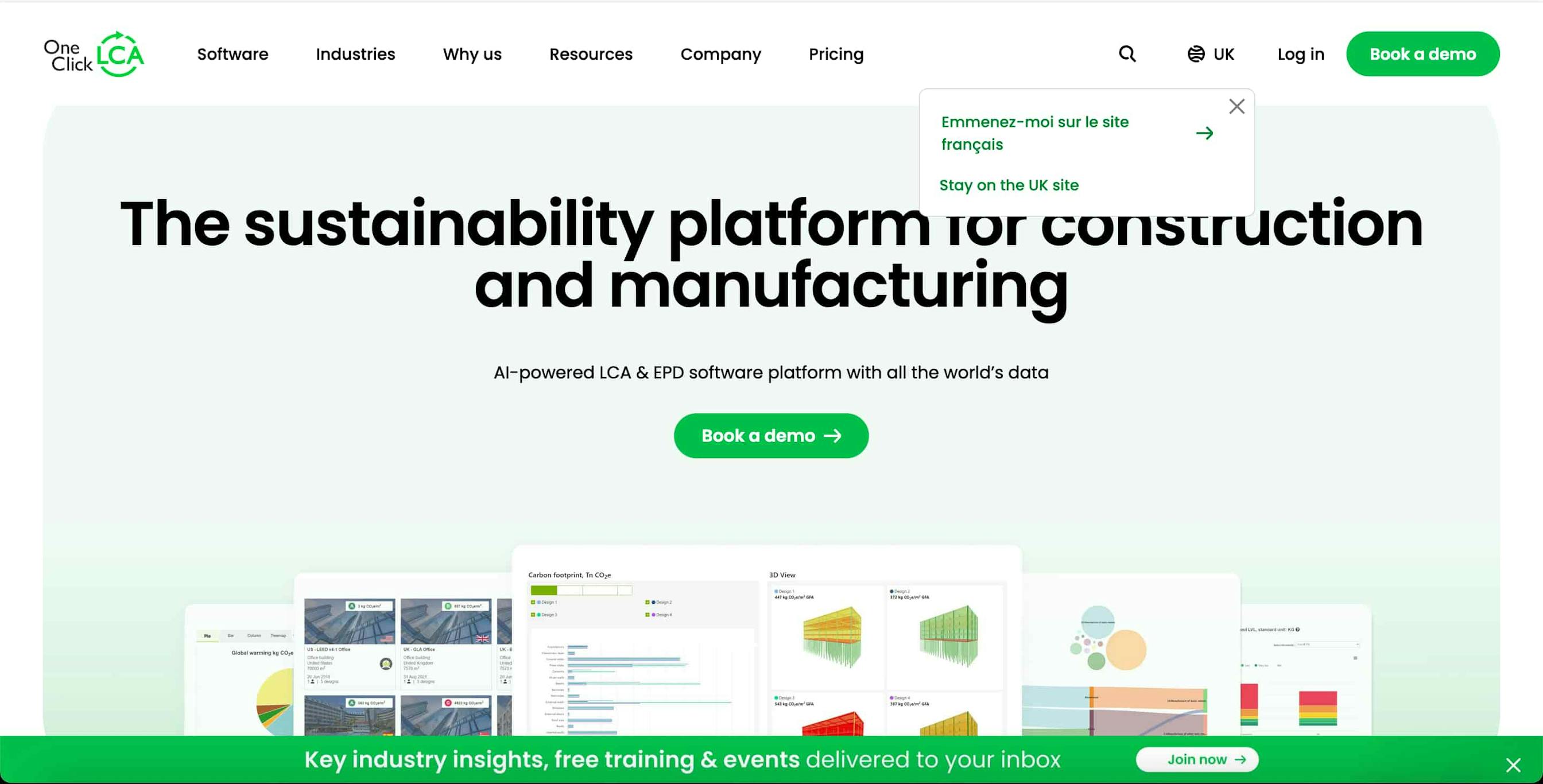
Location: Helsinki, Finland
Best Suited For: Companies partaking in large construction and manufacturing projects
This niche life cycle assessment software is likely to become imperative as we seek to improve the climate resiliency of buildings in the midst of natural disasters caused by climate change.
Why Choose OneClick LCA: This LCA software is best for companies that work in construction or create an ecological footprint through their infrastructure projects, and want to effectively reduce the CA impact of future construction projects.
Pricing: Available on request; price varies depending on desired features and tailored-use
Ecochain’s life cycle assessment software called Mobius is known for its easy-to-use interference, which makes it easy for first-time users to determine the environmental impact of their product.
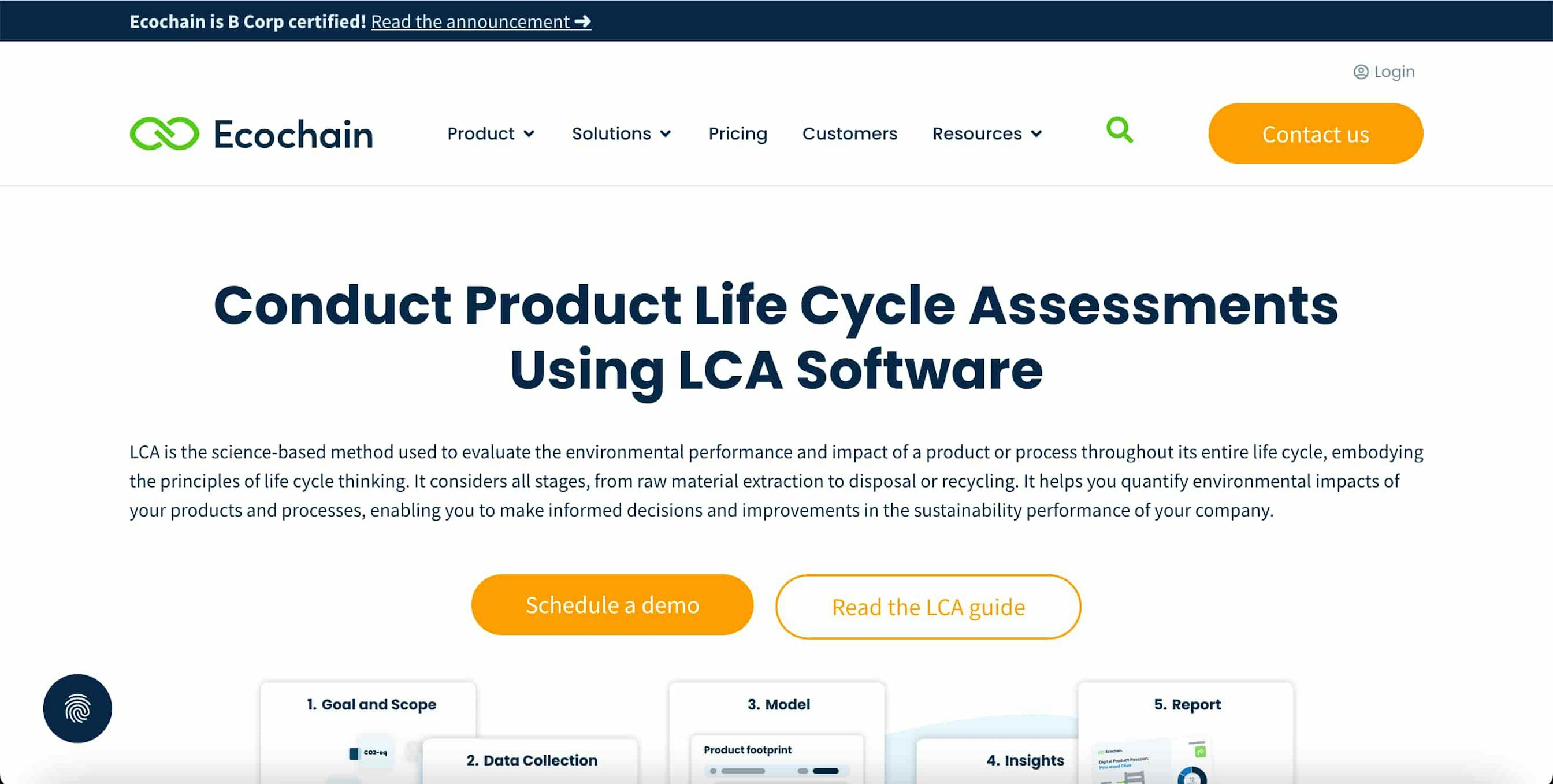
Location: Amsterdam, Netherlands
Best Suited For: Manufacturers a part of industries including apparel, textiles, food & beverage, packaging, and construction materials in need of quick and reliable product-level LCA insight.
Why Choose EcoChain: Ideal for businesses seeking a simplified LCA solution, as EcoChain is known for being business user friendly.
Pricing: Starts at $315 USD/month

Known as the only free and globally available LCA software, openLCA is a free life cycle assessment software that can be used for both business and personal life cycle assessments.
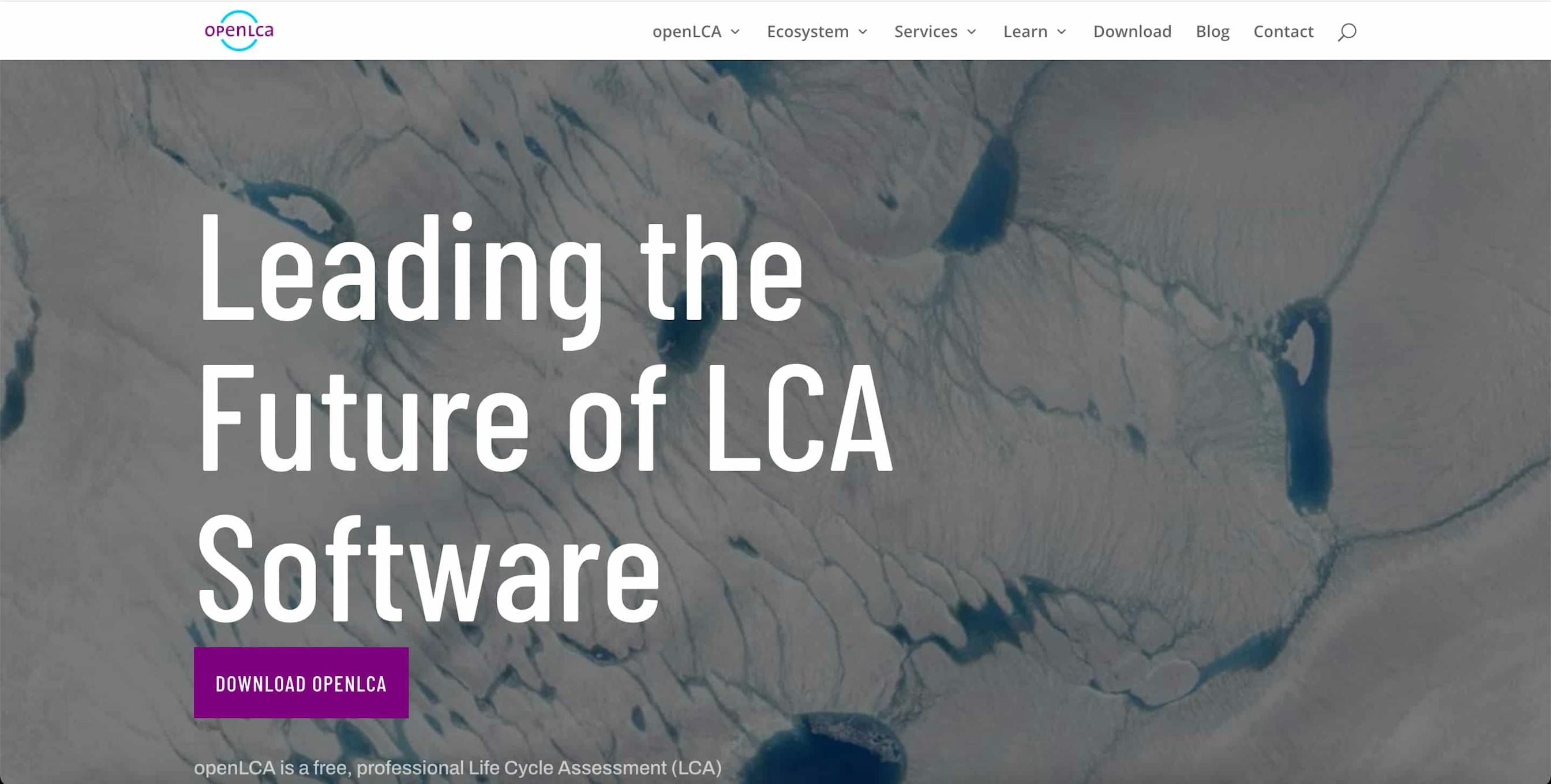
Location: Berlin, Germany
Best Suited For: Research institutions, consultancies, academics, and technical users working on collaborative cases for sustainability modeling.
Why Choose openLCA: Ideal for businesses looking for affordable LCA software, as openLCA is known for its user-friendly interface and reliability.
Pricing: Free with option for paid databases
Sphera is also known for having reputable life cycle assessment software called GaBi – as they combine the use of reliable software and modeling to help their clients understand their product’s ecological footprint.
In fact, Sphera has access to over 20 databases – meaning the information they retrieve will be specific according to the sector of your business.
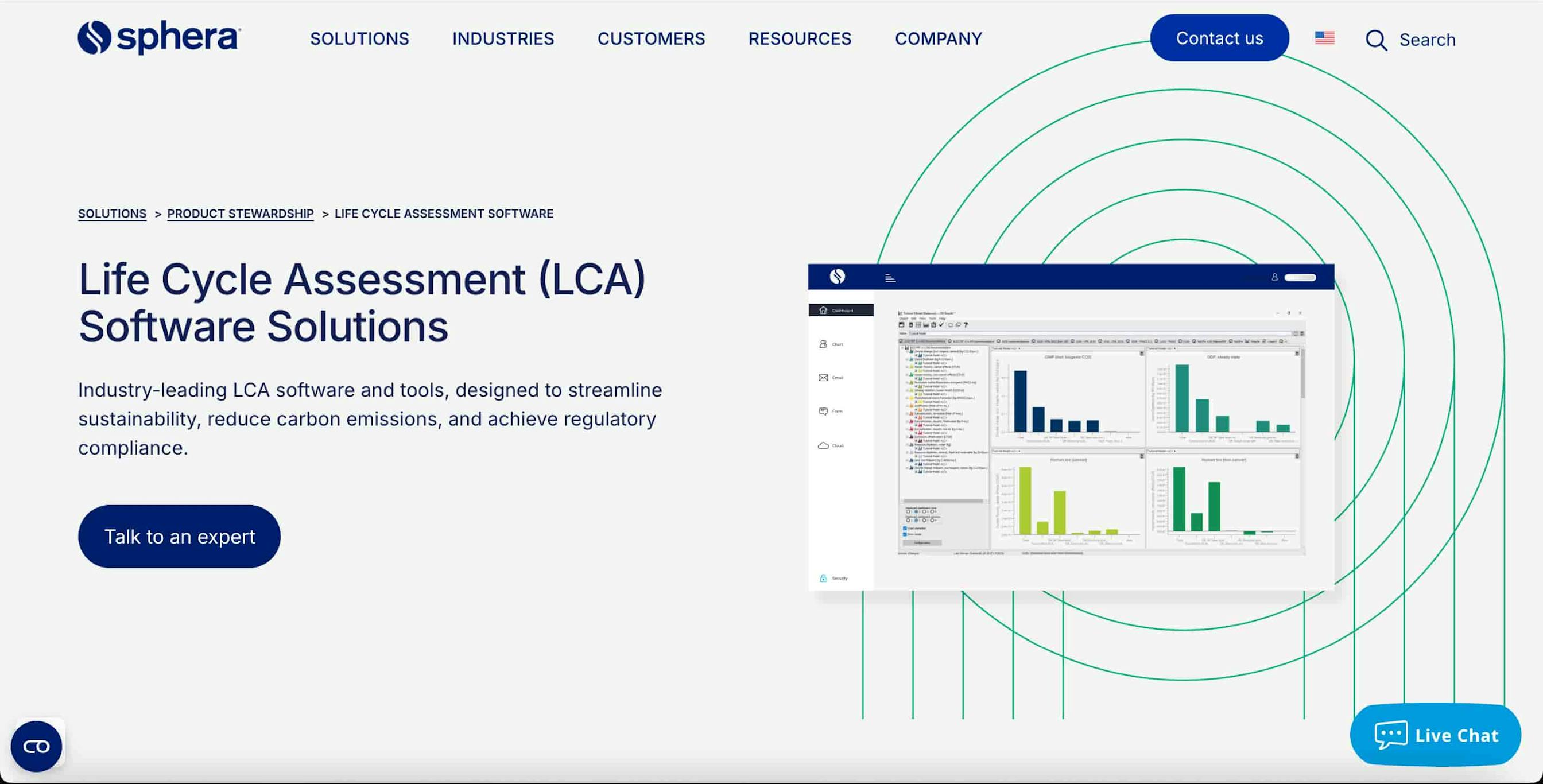
Location: Originated in Germany but serves globally
Best Suited For: Large enterprise clients
Why Choose GaBi Sphera: Optimal for companies seeking a wide variety of networking and resources for LCA, as Sphera is known for its large database.
Pricing: Starts at $1,500 USD per user
Overall, the use of life cycle assessment software can allow your company to adapt its products and services in a world battling against climate change – and it’s never too late to start, especially when our personalized experts are awaiting your call.
Greenly’s ability to provide real-time tracking, and pre-personalized templates for your organization’s specific LCA needs makes it one of the most intuitive and accurate platforms currently available for LCA.
While platforms like OpenLCA and One Click LCA are developed for people with previous LCA expertise or require a better understanding on the use of manual tools, and Gravity focuses on AI emissions factors – Greenly offers a more agile and SME-friendly approach to Life Cycle Assessment. With our pre-made LCA templates and the option to build personalized templates, Greenly allows companies to kick-start their LCA process in an approachable manner without sacrificing accuracy.
The interactive flip cards below (move cursor over card to flip) will reveal how Greenly leads for SMEs in LCA software:
Furthermore, every emission factor is verified line by line, allowing for unmatched transparency and providing users with the full autonomy to design and scale their LCA plans in whichever way best suits their business. Unlike other platforms, Greenly’s real-time tracking and benchmarking tools allow users to compare their own products that have already been analyzed to optimize their current LCA strategy for greater success.
Greenly’s LCA platform also generates automated LCA reports ready to be shared with stakeholders, which lets them quickly and clearly communicate their results to ensure stakeholder engagement.
Overall, all of this makes Greenly one of the best LCA solutions for scaling SMEs seeking to incorporate tangible and customizable sustainability strategies, beyond a mere compliance checklist, into their business models.

Choosing the right life cycle assessment software can be overwhelming at first, but it doesn't have to be an impossible task – especially when there are platforms like Greenly that can offer all of your life cycle needs with a single software.
The table below compare and contrast what Greenly's LCA software can offer as opposed to other major competitors:
| Feature | Greenly | One Click LCA | Ecochain | GaBi Sphera | openLCA |
|---|---|---|---|---|---|
| User Interface & Accessibility | User-friendly, easy to navigate, encourages stakeholder engagement | Construction-focused, cloud-based and intuitive for infrastructure use | Business-user friendly, fast and scalable | Professional, detailed interface for technical users | User-friendly, but better for technical users |
| Database Integration | Automated data collection for Scope 1, 2, and 3 emissions | Extensive material database with 80+ compliance standards | Reliable database with focus on regulation compliance | Access to 20+ specialized databases | Flexible but requires manual configuration |
| Methodology Transparency | Aligned with GHG Protocol, verified by third-party auditors | Auto-verification and quality checks for EPDs | Regulatory alignment: EPDs, CSRD, CBAM | Sector-specific modeling and compliance | Open modeling enables full transparency |
| Usability for Non-Experts | Designed for business-wide accessibility | Great for construction experts, less generalist-friendly | Ideal for non-technical users | Technical interface suited for experts | Accessible, but requires LCA knowledge |
| Pricing Transparency | Clear, visible pricing available online | Unclear pricing | Unclear pricing | Pricing not publicly listed | Free and open access |
Overall, while each LCA software has its strengths – our LCA software at Greenly stands out for our unique and effective platform offering a user-friendly interface, personalized climate expertise, and dedication to aligning our platform with key reporting standards like the GHG Protocol and CSRD.
Ultimately, our winning combination of emissions tracking across scopes 1, 2, and 3 and a seamless interface is perfect to engage anyone across your company intertwined with LCA –making Greenly the ideal partner for companies looking to make life cycle assessments both actionable and accessible.
By this point, we all know why it’s a good idea to conduct a Life Cycle Assessment – but why should the use of life cycle assessment software be on your company’s radar?
Well, conducting a Life Cycle Assessment without third party assistance can prove difficult and time consuming – but with the use of life cycle assessment software, a wide-variety of options and solutions become available without the need to think it through.
The flip cards (move cursor over the card to flip) will reveal just a few of the benefits of using LCA software:
This is because companies who seek the use of life cycle assessment software can not only sit back and let the experts do the math, but they can also enjoy specialized expertise, ideas, and solutions on how to improve their products and services moving forward.
Life cycle assessment software often provides exclusive tools that could help your company to improve upon your product or service’s existing environmental impact, such as by providing different scenarios on the product or service’s sustainability if various mechanisms were to be implemented.
Therefore, the use of life cycle assessment software helps to ensure a company’s continuous improvement and growth regarding the environmental impact of their products and services.
In addition to ensuring continuous ecological refinement of their products and services, companies that choose to work with a life cycle assessment software are bound to reap the following benefits:
The table below will breakdown the benefits of using LCA software:
| Benefit | Description |
|---|---|
| Save Time | Using LCA software reduces the time and effort needed to conduct a Life Cycle Assessment by automating calculations and providing a user-friendly interface for data input and analysis. |
| Expertise and Solutions | Companies benefit from the specialized expertise and solutions provided by LCA software, which offer insights into improving the environmental impact of their products and services. |
| Exclusive Tools | LCA software often includes exclusive tools that help companies analyze different scenarios to enhance product sustainability and environmental performance. |
| Ensure Continuous Improvement | LCA software helps companies ensure continuous improvement and growth regarding the environmental impact of their products and services by regularly updating and refining their practices. |
| Save Money | By identifying ways to improve energy efficiency and reduce waste, LCA software can help companies save on utility bills and operational costs over time. |
| Attract New Customers | Improving the ecological footprint of products and services appeals to environmentally conscious consumers, thereby attracting new customers and retaining existing ones. |
| Newfound Creative Inspiration | The insights gained from LCA software can inspire companies to innovate and create more sustainable products and services, fostering creativity and potentially leading to new market opportunities. |

A Life Cycle Assessment, often referred to as an LCA, is a way to assess the current environmental impact of a product – and this analysis encompasses the entire life of the product, from manufacturing to when it is thrown away by the consumer itself.
A life cycle impact assessment can help companies to better understand their life cycle inventory analysis, further reduce greenhouse gas emissions, and aid in the fight against global warming.
Life cycle assessment software is a tool meant to help companies measure the environmental impact of their products and services through each stage of the product’s life cycle.
Similar to other carbon footprint reduction mechanisms such as carbon accounting, conducting a life cycle assessment without any third party assistance can prove tricky – and that’s where life cycle assessment software comes in.
According to the GHG Protocol, following a standard for a life cycle analysis and impact assessment can help companies to reduce their emissions to the greatest extent possible.
Life cycle assessment software is predominantly used to determine the current carbon footprint of consumer goods and services, often as an effort for a company to reduce their environmental impact and improve upon their own sustainability.
The great thing about life cycle assessment software is that there are many different types, each of which can be used to adhere to the specific parameters of your business.
The battle cards below will review some of the differences between the two main types of LCA assessments:
Life cycle assessment software is most commonly used by large companies that are subject to large carbon footprints, such as:
However, it is important to remember that any company can seek the use of life cycle assessment software – and that an LCA is not limited to large enterprises.
The drop down sections below will provide examples of how life cycle assessment software can benefit small companies in various sectors:
Beyond traditional environmental metrics, comprehensive LCA assessments can incorporate social life cycle assessment methodologies to evaluate broader sustainability impacts. Therefore, when companies invest in collecting primary data specific to their business operations, they're bound to acquire more accurate insights into the potential human health risks of their product or service.
According to the Environmental Protection Agency, this can allow for long-term, informed decisions regarding the materials and processes – and how current environmental management standards could impact both workers and consumers.
Many life cycle assessment software are offered free of charge, but for the full-experience – companies will often need to commit to paying a fee to ensure the insight received from a life cycle assessment software is sufficient and personalized to their business needs.
Ultimately, life cycle assessment software is used by a wide-variety businesses – regardless of size or sector, to ensure they continue to provide the most ecologically sound products and services possible.

Life cycle assessment software often works by using various databases that coincide with both eco-design, collecting input and output data, and the current circular economy. However, efficient life cycle assessment software will do more than pull numbers from a database.
Here is a breakdown and LCA software overview of how life cycle assessment software usually works:
It is important that users of life cycle assessment software do not seek it as one-and-done mechanism to rectify their environmental impact, but rather – to use life cycle assessment software as an opportunity for continuous improvement.
The summary cards will reveal additional environmental aspects, impact categories, and sustainability initiatives that companies should remain mindful of in addition to a life cycle impact assessment:

The timeline below will depict the four stages of a product's life cycle:
